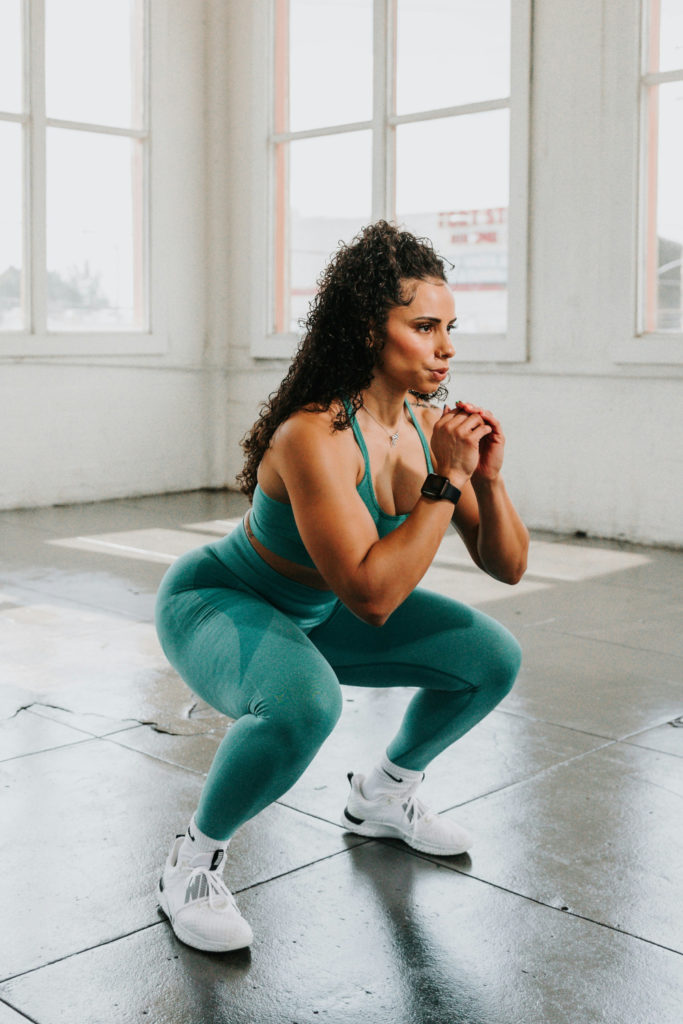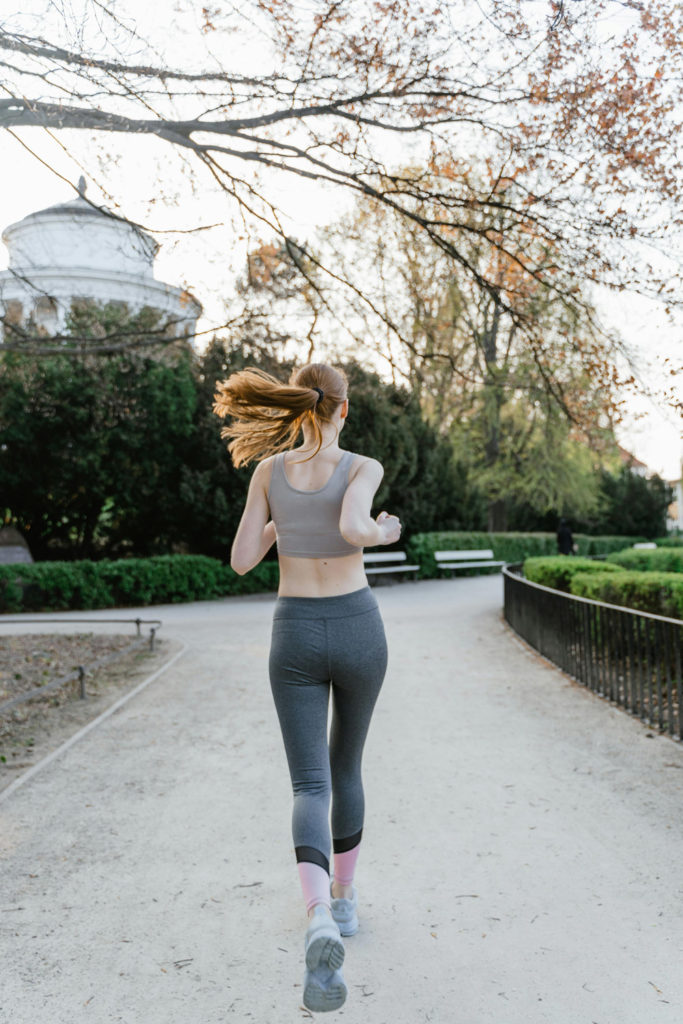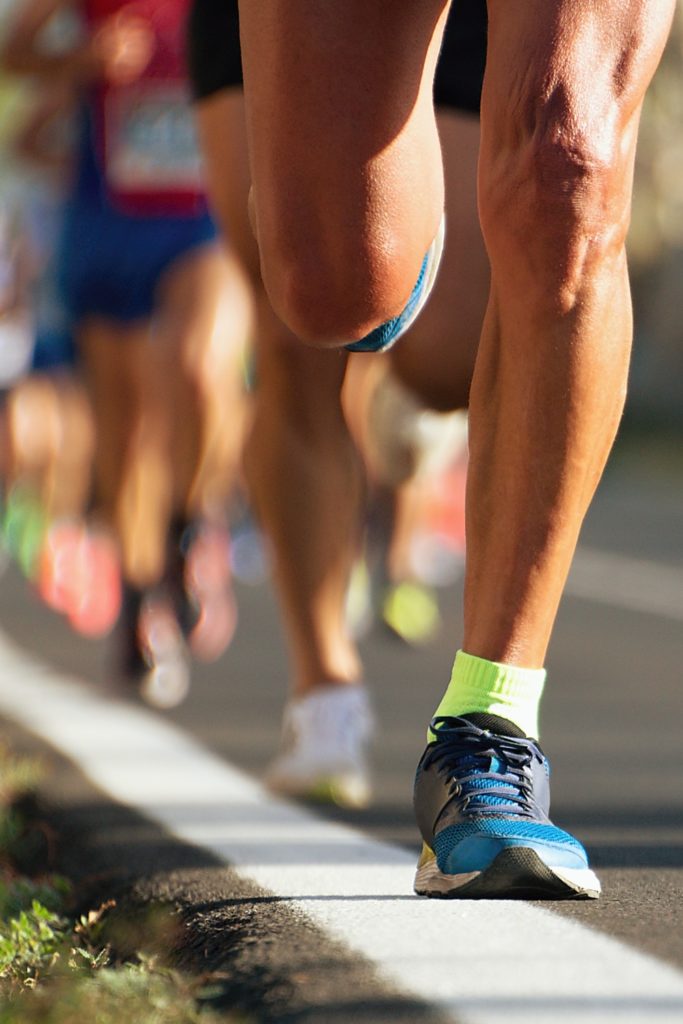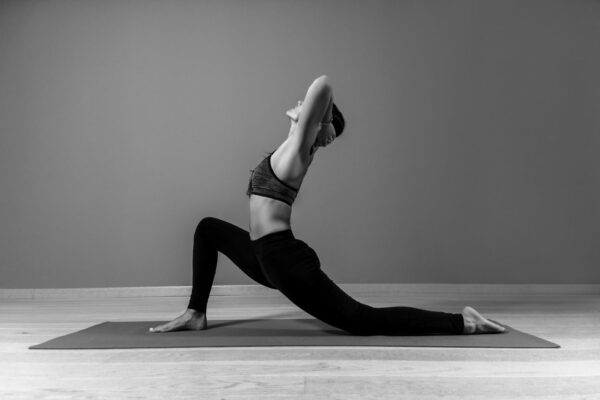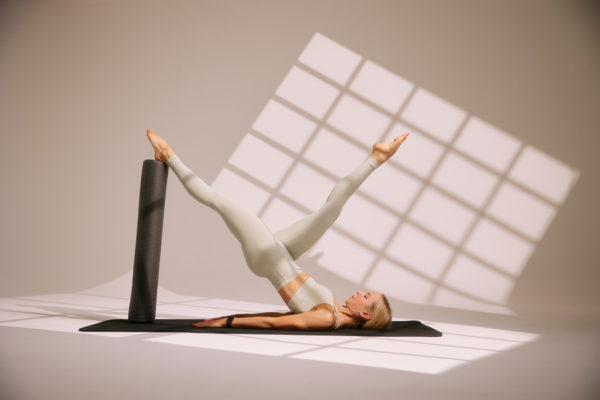How To Improve Your Posture With Exercise, According To The Experts
By
2 years ago
How to combat your postural slump
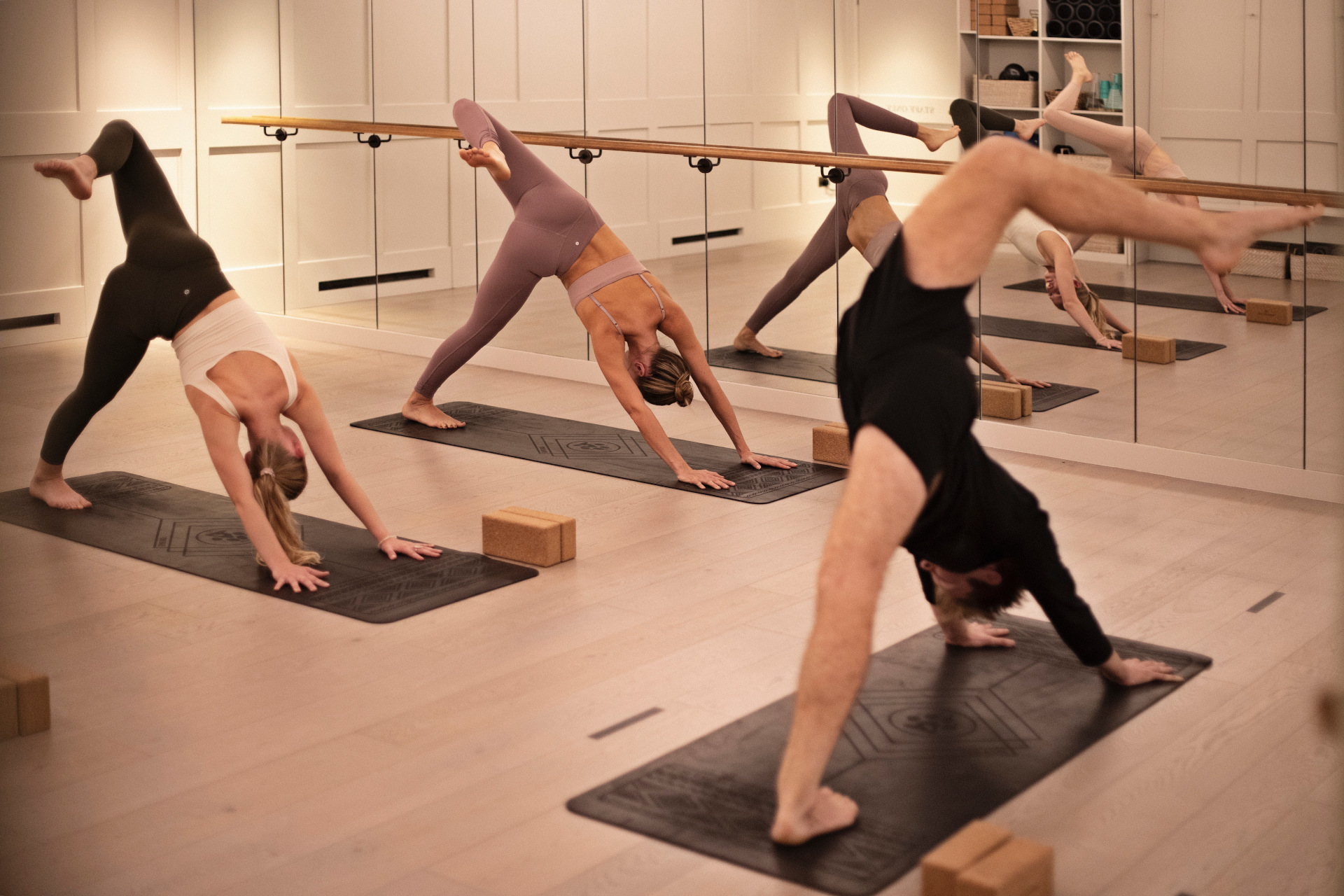
Proper posture isn’t just about having a poker straight back or looking a few inches taller, the benefits stretch to other parts of the body too. In fact, research suggests that upright posture can even improve your mood. Bad habits can be hard to kick, but being able to recognise them and understand the effects they are having is a first step towards replacing them with better ones. With that in mind, it is possible to reverse the effects of sub-par posture and make both fitness and lifestyle changes to improve it for good. Top trainers from luxury London gyms Bodyism, BXR and KXU, as well as classical Pilates expert Gaby Noble from Exhale Pilates London, share their best tips below…
The Best Boutique Fitness Classes & Studios in London
How To Improve Your Posture With Exercise, According To The Experts
What are the signs of bad posture?
When in a neutral position, our spine isn’t dead straight, but in a slight ‘S’ shape. This allows us to move in all planes of movement. Bad posture, however, is noticeable when the ‘S’ is exaggerated beyond the neutral spine. Jo-Leigh Morris, instructor at BXR, says common external signs are ’rounded shoulders, a significant curve in the lower back, and forward tilting of the pelvis.’ Internally, this could be causing aches, pains and tightness across the back, shoulders, pecs, hips, glutes and hamstrings.
Alex Rogers, trainer at KXU, shares a simple assessment you can do on yourself to check your posture: ‘Stand and allow your arms to hang by your side, relaxed. Take a look down and notice where your thumbs are pointing. Are they pointing straight in front of you? Our arms should hang by our sides with thumbs more or less pointing forwards. About 90 percent of us will find that the thumbs are pointing inwards towards one another and arms are hanging very much in-front of the body.
‘This is a classic sign of internal rotation of the shoulder resulting in what we call upper cross syndrome (UCS). Through excessive slouching, the shoulders are rounded forward, lengthening and weakening the upper back muscles.’
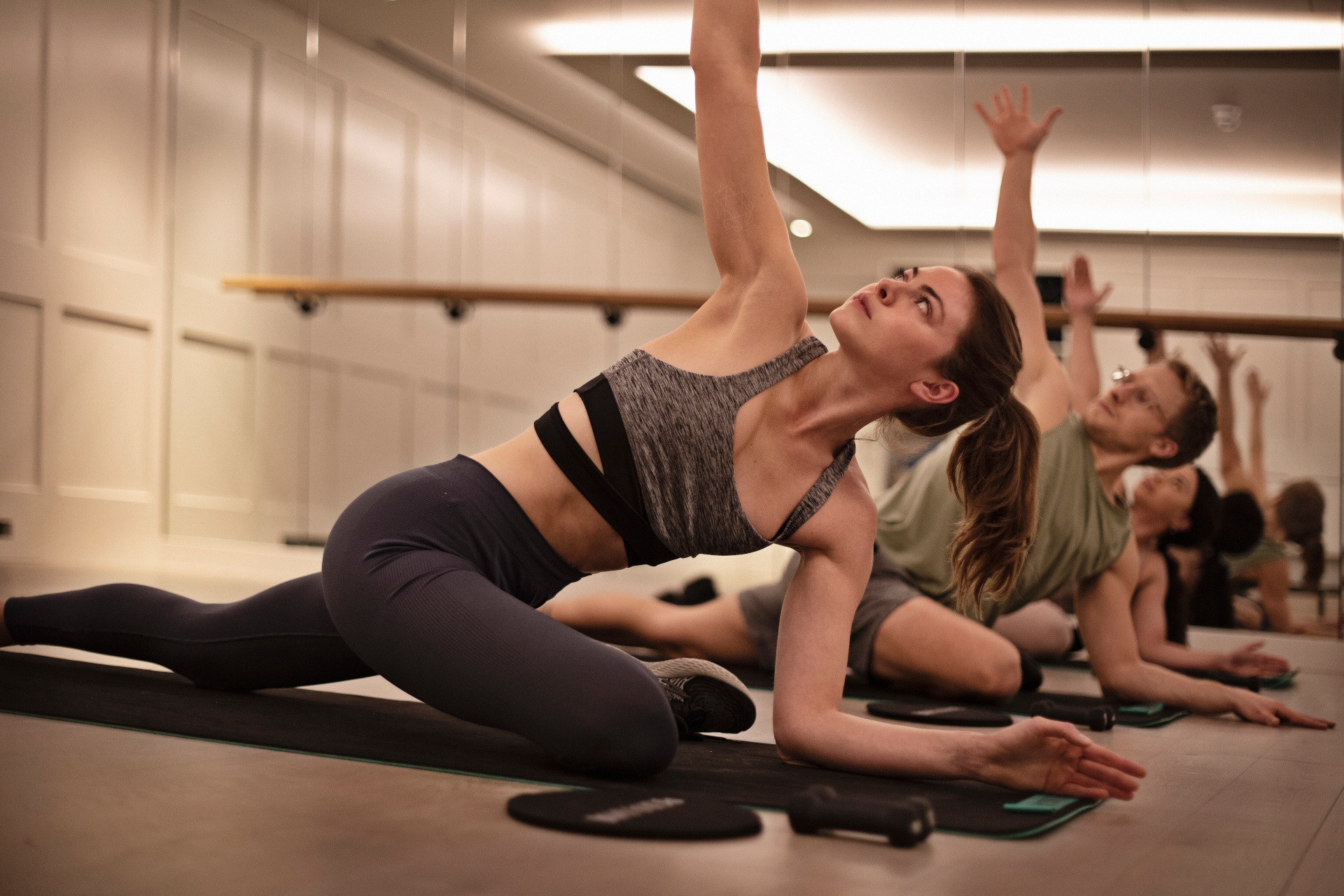
(c) Bodyism
Aside from causing discomfort, bad posture can also limit our range of movement as we grow older. ‘It can encourage spinal dysfunction and joint degeneration, making our movements like getting out of bed, going for walks, or reaching over to pick something up a lot harder,’ says Jo-Leigh.
How we carry ourselves not only has a physical impact on our health, but also our energy, and, on an emotional level, how we engage with others and the world around us. Bodyism’s in-house osteopath Jess Lambert says that ‘structure and function within the body are reciprocally interrelated, so if our musculoskeletal system is weak, it will be reflected in other bodily systems.’
Digestion is one of the bodily functions effected by posture. According to Gaby Noble, founder of Exhale Pilates London, ‘restrictive breathing patterns from compressed chest and intercostal muscles can also be signs of bad posture. By lengthening the waist, twisting, turning and rotating the spine you are giving your large intestine more space for quicker digestion.’ If our intestines are compressed they don’t function properly, which can lead to bloating, constipation, IBS, and other digestive issues.
How can we improve our posture if we work at a desk all day?
When it comes to posture, a ‘little and often’ approach is ideal, so weaving small daily movements into your routine can be more manageable. Jess suggests: ‘A walk around the block before your day starts, a 15-20 minute yoga class or stretch midday, and a bit of movement again in the evening.’
‘Walking up the escalators, having a stretch whilst making your morning coffee, and even a five-minute stretch in your desk chair will make a difference over time,’ adds Jo-Leigh.
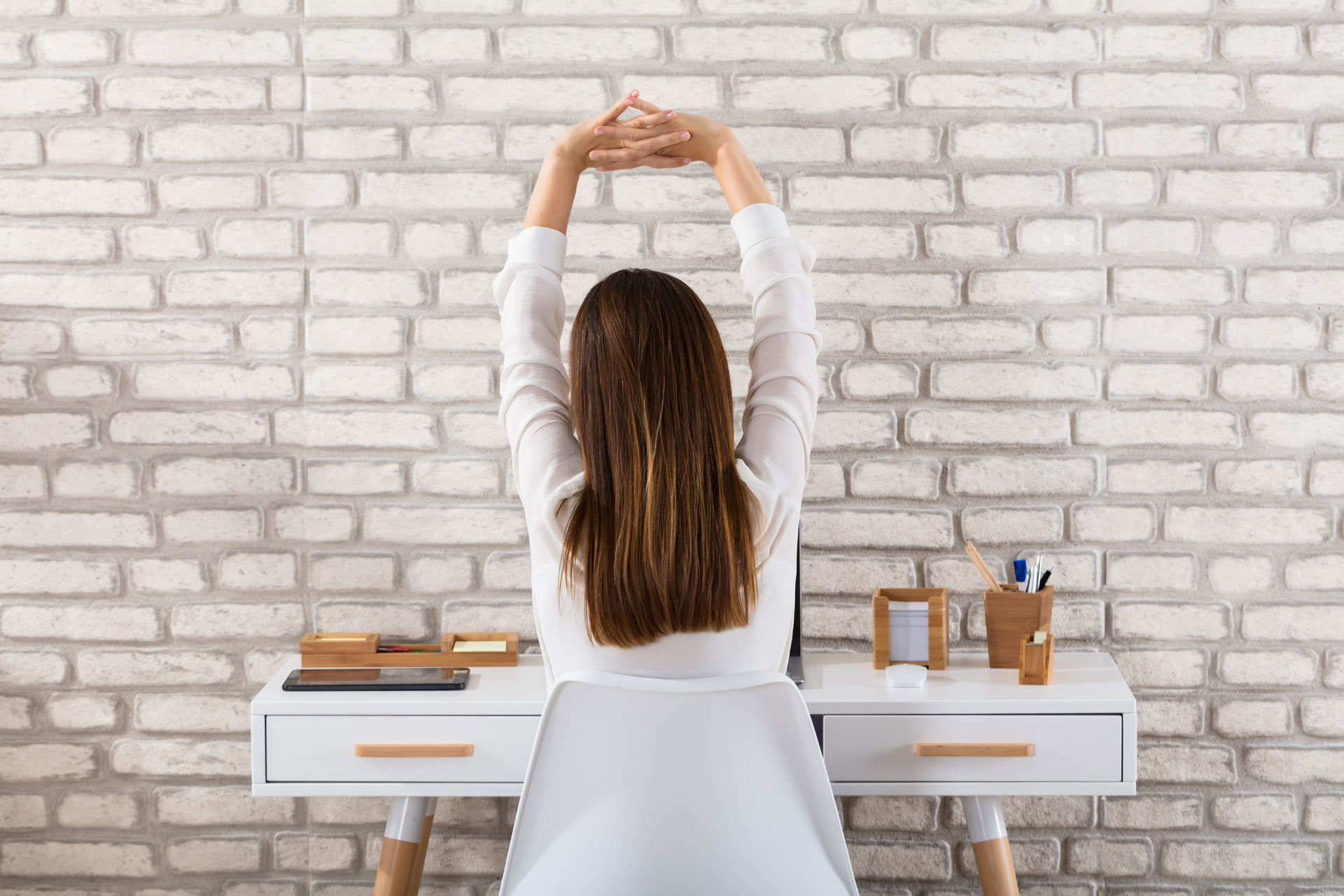
(c) Getty Images
Gaby says that stress can accumulate in different areas, for example, clenching the jaw can lead to tightening in the neck and shoulders. So it’s crucial to look at where the hunching stems from. ‘Are you hunching over to be on your computer or phone? If so, your chair is probably at the wrong height. Make small changes and find the root of the cause and do exercises that reverse repetitive sedentary state. Clasping your hands together at the bottom of your back and stretching your arms down whilst you take your head to the left, then middle back to centre can help alleviate shoulders rolling forward and open up your chest minimising hunched shoulders.’
Ultimately, it’s best to think of strategies for longevity. Alex recommends: ‘Using a small soft blow up Pilates ball to create a mild back bend. Place a small towel or cushion under your head and place the small ball at the mid-back, around bra line area. Slowly lower yourself down and spread the arms to where is comfortable. You can experiment with legs elongated or in a gentle butterfly, soles together and allowing the knees to spread apart. Stay here for five to six minutes.’
Which workouts are good and bad for our posture?
Mike Tanner, trainer at Bodyism, says that performing exercises with poor posture leads to worse posture, with one of the biggest culprits being spin classes. When you’re on a bike, your shoulders are forward, your neck is forward and bent upwards, and your hips aren’t opening fully; all of which can cause strain and tightness over time. If you do love spinning, be extra conscious of your posture, and make sure to stretch well post-class.
As for workouts for correcting, improving, and strengthening our posture, one of the best is Pilates. Gaby says that ‘Pilates is all about lengthening and creating space in the body using strength, stretch and control. In many exercises you are trying to find opposition or in Pilates terms a ‘two-way stretch’ from a stable place which is what encourages people to literally grow taller and create stability and mobility in the body. You learn to stand taller through important muscles groups which are our shoulder blades, glutes and core – all helping to keep our trunk upright when we stand and sit. The exercises we do in Pilates enable us to move freely in our everyday lives.’
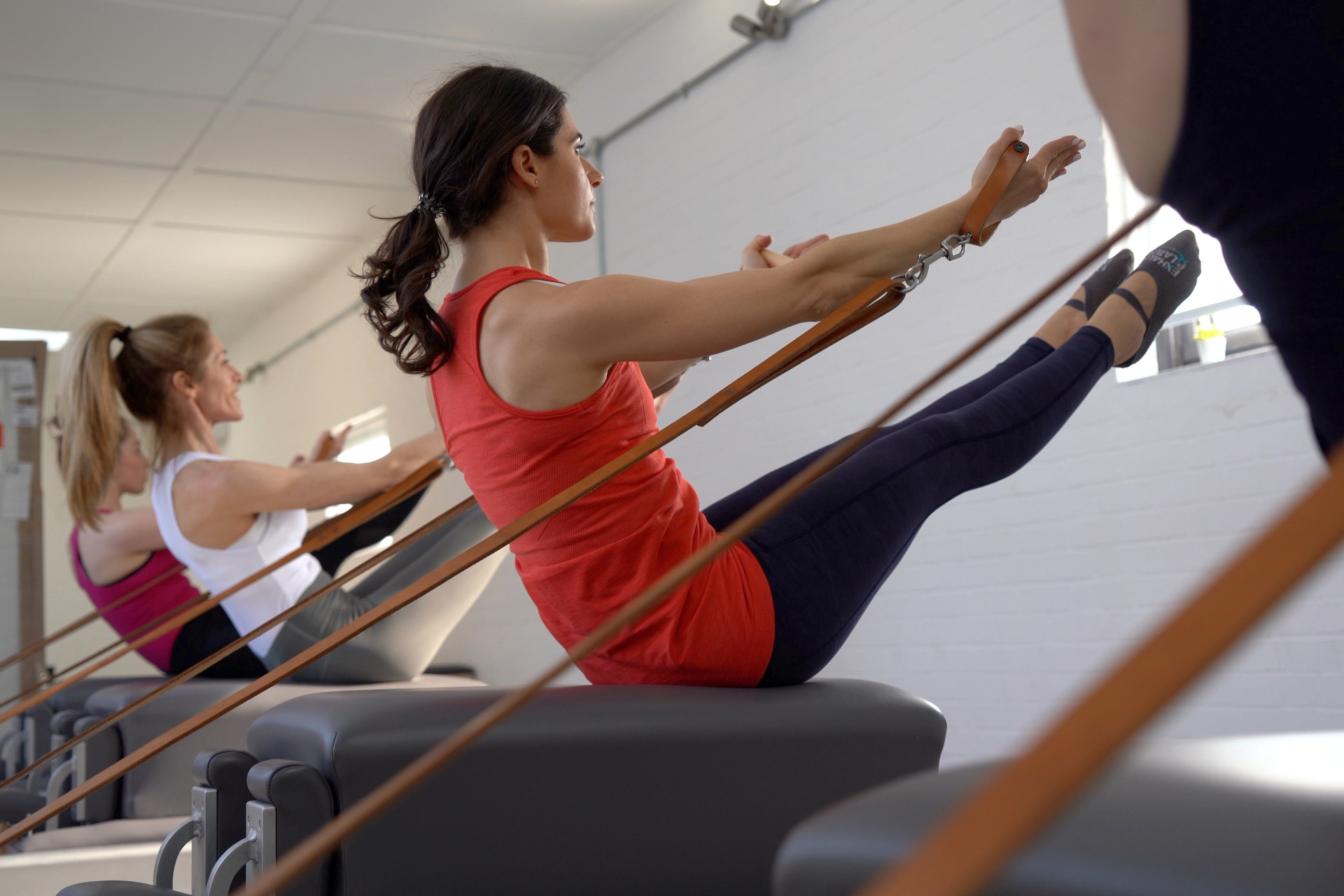
(c) Exhale Pilates London
Other workouts to try include weight and endurance training, as well as a combination of strength and flexibility exercises. As our trainers highlight below:
- ‘It’s key you do the exercises with the right form, otherwise you can actually make things worse and create further imbalances throughout the body which will not only affect your posture but create injuries,’ says Gaby. ‘We suggest all our clients at Exhale Pilates do weight training, especially woman past 35 to help support bone density and balance.’
- ‘Generally, it’s a lack of endurance as opposed to weakness that is the problem when it comes to bad posture,’ adds Mike. ‘If you find it hard to sit up straight for one minute, it’s a good sign that you need to up your endurance.’
- Jo-Leigh suggests ‘using a combination of strength training with flexibility to help bring harmony of strength and length. This will ultimately increase your range of motion as well as making you stronger. Strength training will also help improve core strength, which is essential to hold the body up in correct alignment.’
Exercises for better posture
One of the main postural issues is upper cross syndrome. This is a muscle imbalance caused by the weakening and lengthening of the posterior upper back and neck muscles, combined with the tightening and shortening of the opposing anterior pectoral and neck muscles. Alex shares some mobility exercises to counteract UCS:
1. Arm Walk Angels (6 reps)
Sitting on a mat, bend your knees and place your feet on the floor. Bring your hands behind your back, reach out through your arms as far behind you as possible with hands resting on the floor. From this shoulder stretch start to walk your hands slowly out to the side and around towards your knees whilst simultaneously lowering your back to the ground and reverse the movement.
2. Shoulder Stretch (90 seconds)
Stretch your shoulders while holding the starting position outlined above. To make the stretch more intense, shift your hips further forwards.
3. Prone T Rotations (6 reps each side and hold for as long as you wish)
Lying flat on your front, hold your arms in a T position out to your side. Bend your right elbow, place your hand on the floor close to you and use this to lever the right leg up and over to the floor on the left side of your body. Keeping the right knee bent you can then straighten through the leg or rest on a cushion or bolster. Repeat on this on the other side.
4. Puppy Dog Pose (hold for 3 minutes)
You may have seen a puppy doing this. In yin we call it ‘heart melting’ as we surrender our hearts to mother earth. Start on all fours and stack your hips directly over your knees, then reach your arms forwards and sink the thoracic spine (mid-back) to the ground. If you feel too much in the shoulder area you can bend through your elbows a little.
Featured image: Bodyism




